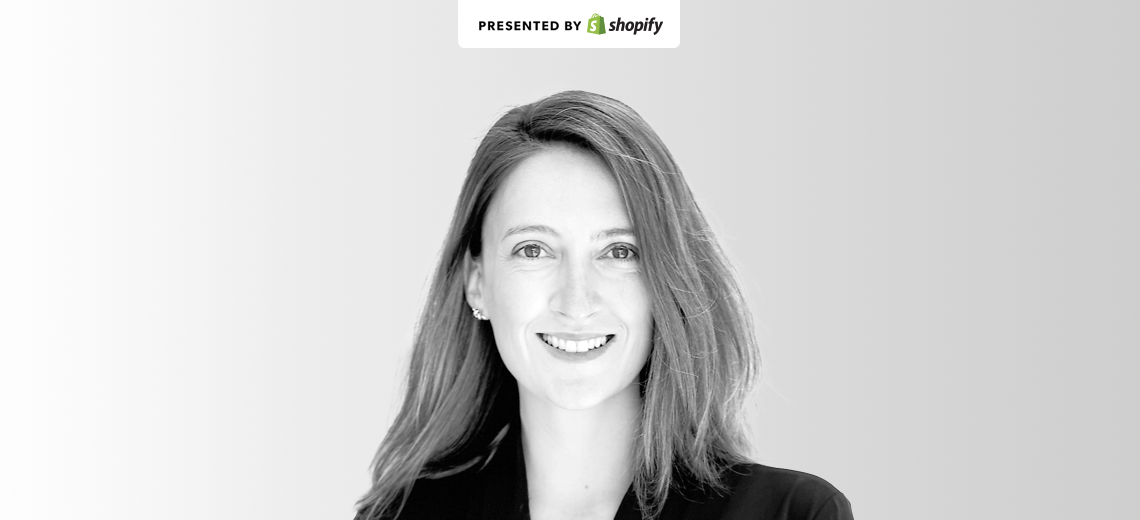This is an episode of the Glossy Fashion Podcast, which features candid conversations about how today’s trends are shaping the future of the fashion industry. More from the series →
Subscribe: Apple Podcasts • Spotify
Elisabeth de Gramont has been chief brand officer at the Canadian sustainable apparel brand Frank and Oak for more than two years. In that time, under her leadership, the brand’s become more transparent and more communicative about its sustainable efforts than ever.
Just this year, Frank and Oak launched its first sustainability progress report, a 17-page document granting an inside look at the material impact of the brand’s production and the concrete steps it’s taking to reduce that impact. The report was spearheaded by de Gramont herself, but it required the participation of almost every team at the company.
“We felt confident about how our factories and how we were doing things,” de Gramont said. “But it’s important for us to then say, ‘OK, can we actually quantify what we’re doing and what we’re working toward?’ We talk a lot about material science, so this was our chance to actually show what percentage of our clothing is using those sustainable fibers and what we’d like it to be.”
De Gramont joined the Glossy Podcast to talk more about how Frank and Oak communicates its sustainability goals to its audience and what related investments it’s making now. For example, all of the brand’s deliveries in Canada are currently being completed by electric vehicles.
Below are a few highlights from the episode, lightly edited for clarity.
On putting together the progress report
Ad position: web_incontent_pos1
“I led the project, but there were crucial inputs from the sourcing team because a lot of it had to do with our supply chain. We make a huge range of products: basics, tops, bottoms, underwear, socks, jackets, outerwear, hats. So we have many different suppliers, and the sourcing team is crucial in keeping tabs on all those suppliers and understanding what they’re doing and that they keep their certifications up. Then our operations team had input on how many packages we’re sending out, how many are delivered by electric vehicles and in which areas we’re seeing the most impact. Then finally, the marketing team had input on the report itself — making sure that it looked good and communicated the data clearly and that everything was on brand, for example.
For any brand that wants to do something like this, I think it’s important that you understand who you’re making it for. Is it for the customer, for the media or for your shareholders, or is it for your employees to make it clear what the goals of the company are? And you definitely can’t have the takeaway be, ‘We’re perfect and we’re doing everything perfect.’ Because no brand is perfect.”
On delivering by electric vehicle
“Since the second half of last year, we started working with a new logistics provider, and they do all the warehousing and logistics and everyhing. They’re in Toronto and they’re called GoBolt. They’re unique and very passionate about sustainability, so they have a fleet of electric delivery vehicles in several cities and they’re building more. We launched with them in Toronto, which is our biggest market. All last mile deliveries are done by electric. It’s rolling out to Montreal and Vancouver next, so that covers our three biggest markets. New York City is our fourth biggest market, and we will launch EV delivery there in the next couple of weeks. We’re one of the first apparel brands to be working with them.”
On understanding Frank and Oak’s audience
Ad position: web_incontent_pos2
“Last year, we did some deep dives on customer sentiment. We reached out to a ton of customers through email and asked who wanted to speak to us for an hour and tell us more about who they are and what they like about the brand. We ended up talking to around 20 people over Zoom and spent time just kind of understanding their motivations, where they’re coming from and what sustainability means to them. It’s really important to us , ultimately, to know what kinds of products people are going to wear. We’re passionate about the environment, but we’re not going to solve the climate crisis by producing clothes. So we want to create great product that consumers want and also that they feel good about buying because they know it’s not doing as much damage as some other brands. We saw a lot of customers who came to us originally just because they liked the style — a lot of them didn’t even really know a lot about sustainability beforehand, so there’s an education element to it as well.”




